“June 16, 1971 / Mama gave birth to a hellraisin’ heavenly son.” – 2pac, “Cradle to the Grave”
On this day 44 years ago, Afeni Shakur, a 24 year old Black Panther from Lumberton, North Carolina, gave birth to her first child and only son at a hospital in East Harlem just weeks after being acquitted of conspiring to blow up New York City police precincts, department stores, and public buildings in what became known as the “Panther 21” trial. As anyone reading this article probably knows, that child, Tupac Amaru Shakur, grew up to become one of the most important pop culture icons of his generation. Nearly twenty years after his death, his legacy continues to be celebrated across the globe: statues of him have been erected in Stone Mountain, Georgia and Herford, Germany; commercials based on his poetry air on American television; contemporary Hip Hop albums, like Kendrick Lamar’s To Pimp a Butterfly, are inspired by his life and music; and people as disparate as Florida Senator Marco Rubio and Vladislav Surkov, one of Vladimir Putin’s top advisors, have expressed admiration for his body of work. Despite the already long shadow Tupac casts over the pop culture landscape, many continue to wonder how much more he could have accomplished had he not been murdered at the age of 25.
This article written in celebration of what would have been Tupac Shakur’s forty-fourth birthday asks what might have been had he not driven to Las Vegas on September 7, 1996, not encountered Orlando Anderson at the MGM Grand after the Mike Tyson – Bruce Seldon fight, and not been riding shotgun in Suge Knight’s BMW on the way to Club 662 that night. While that kind of inquiry necessarily involves speculation, as discussed below, Tupac left behind clues regarding his ambitions in music, films, and beyond.
Tupac Shakur: The Musician
In September 1996, Tupac was the most provocative artist working in popular music’s most controversial genre. Seven months earlier, he stormed the charts with All Eyez On Me, his most ambitious album and the first in rap music to span two compact discs. Four months after that, he released “Hit ‘Em Up,” a merciless diss record that irrevocably severed his ties to East Coast rivals like the Notorious B.I.G. and Bad Boy Records. Fighting rap wars and collecting platinum plaques, Tupac was having a memorable 1996 by any metric but he knew that success is a jealous mistress. He was the hardest working man in Hip Hop and was developing a number of projects at the time of his death that were never fully realized.
The best known and closest to completion of those projects was the Makaveli album released posthumously by Death Row Records in November 1996 (Makaveli, a play on Niccolo Machiavelli, was Tupac’s Outlaw nickname). Incorrectly titled in the rush to get it in stores (the title should have been Killuminati: The 7 Day Theory, not The Don Killuminati: The 7 Day Theory), the Makaveli album was nearly finished that September and Tupac had already filmed three music videos to promote it (two for “Toss It Up” and one for “To Live & Die in L.A.”). The Makaveli album provoked polarized reactions from critics and fans alike. Some contemporary reviewers mistakenly characterized it as a crass cash-in compiled after Tupac’s death but it is actually one of his most complete self-portraits and is now considered one of his masterpieces.
Tupac had also been working on another project with a far different goal than the often vindictive Makaveli record. That project was One Nation, a compilation he conceived to heal the rift between the East Coast and West Coast during that tumultuous period of Hip Hop history. (He spells out its concept on the unreleased track “My Own Style”: “Now East to West is irrelevant, we’re doing it worldwide . . . Was it ever a war? If it was, today we sign the treaty.”) Like All Eyez On Me, One Nation was to be a two-disc affair (one on Death Row and the other on Duck Down Records, a label headquartered in New York) and has become legendary among Tupac’s most devoted fans. Though One Nation was never completed (according to Duck Down CEO Dru-Ha, it was about 75% finished), Tupac recorded a number of tracks for it over the course of two weeks in June 1996 (a few of those tracks, including “Military Minds,” were later remixed and released posthumously by the Shakur Estate). Participating in those recording sessions was a diverse cadre of emcees from both coasts: Snoop Dogg, Buckshot (of Black Moon), Smif-N-Wessun, Greg Nice (of Nice and Smooth), the Outlawz (Tupac’s rap group hailing from New Jersey), Melle Mel (one of rap’s pioneers), and Scorpio (a member of Grandmaster Flash’s Furious Five). Tupac also reached out to Outkast and The Roots for the album, and had plans for artists like Kurupt, Scarface, Kokane, Spice 1, Bone Thugs-N-Harmony, and Da Luniz to guest star as well. Some of the songs Tupac earmarked for One Nation have never been heard by the public but its existence as a concept alone is strong evidence that his feuds with East Coast artists were personal in nature, not merely territorial as often portrayed by the media, and suggests that Tupac may have put some of his more trivial beefs to rest had he not been silenced prematurely (as he had with NaS in Bryant Park following the MTV Music Video Awards on September 4, 1996).
The music projects Tupac was working on at the end of his life were numerous. In addition to those previously discussed, Tupac was writing and recording songs for the Outlawz’ debut LP and for MC Hammer’s never-released Death Row album, as well as overseeing the soundtrack for his upcoming film, Gridlock’d (one of the artists Tupac wanted on the soundtrack was, believe it or not, Alanis Morissette). Further off in the distance was a collaboration with controversial R&B legend R. Kelly (the original idea for his Best of Both Worlds albums with Jay-Z was born during an encounter between R. and Tupac at the Hotel Nikko in Los Angeles) and an introspective album he likened to “a Me Against the World part 2.”
Tupac’s prodigious productivity could give one the impression that he had never been more passionate about making music at the end of his life. That’s not entirely true. Rather than some newfound affection for recording, Tupac’s relentless work ethic during his eleven months at Death Row might best be explained by his premonitions of death and the possibility of reincarceration if the appeal of his sex-abuse conviction was denied. Tupac’s interviews in the last year of his life suggest that he was fueled by something other than a love of music (he had contemplated retiring from rap while he was imprisoned and told a reporter from Canada’s MuchMusic that “We rap to make money. We do business.” just three days before he was fatally shot). In one interview on the set of Gridlock’d, Tupac expressed a longing for more acting gigs and described himself as “an actor. I just happen to rap in my spare time instead of being a waiter.” Even when being interviewed by Hip Hop journalists, Tupac did not hide his feelings regarding the uncertainty of his music career. In April 1996, he told Sway from KMEL in San Francisco that he saw himself being an A&R for Death Row Records by 2001, someone like Paul McCartney, who dropped albums every five years or so.
Despite Tupac’s proclamations of loyalty to Death Row, many Hip Hop listeners still argue over how much longer he would have been associated with the label and its embattled CEO, Marion “Suge” Knight. Before delving into that debate, a bit of background is necessary. On September 16, 1995, Tupac signed a hand-written three album deal with Death Row naming Suge as his manager and David Kenner (counsel for Death Row) as his attorney. (The apparent conflict of interest posed by Kenner representing both Tupac and Death Row aroused no protest by the parties.) Less than a month after Tupac signed the contract, Kenner was able to obtain leave from the New York Court of Appeals to post Tupac’s $1.4 million bail. On February 13, 1996, Tupac’s Death Row debut, All Eyez On Me, was in stores. Those who believe Tupac wanted off Death Row argue that All Eyez (two compact discs long) constituted two separate albums within the meaning of his contract, evidencing that he was eager to fulfill its terms and that the Makaveli album would have been his last on Death Row. They may be right in one sense: Tupac’s newly founded Makaveli Records was just getting started and subsequent projects, like One Nation, would likely have been branded with its logo (which featured a five-pointed crown, a symbol of the Bloods) had Tupac lived. However, those who cite All Eyez as evidence of Tupac’s restlessness never put forth any public statements made by him to that effect or any language in his contract or legal precedent supporting the conclusion that a double full-length album constitutes two separate albums for purposes of determining whether a multi-album recording deal has been terminated or not. If that was what Tupac intended, Death Row’s legal team would undoubtedly have fought such an interpretation vigorously.
Others have cited Tupac’s firing of attorney David Kenner on August 27, 1996 as proof of his intention to leave. According to a story published by The New Yorker, Tupac fired Kenner, a powerful figure at the label, because Kenner had prohibited Tupac from removing tapes of his recordings from the studio that night (a long-standing policy at Death Row intended to prevent leaks). Whether Tupac had been planning to fire Kenner or did so out of anger is not entirely clear. Either way, that incident is one of a number suggesting Tupac’s unhappiness with his label. Not everyone thinks that Tupac had one foot out the door, however. Some Death Row employees have opined that Tupac was not unhappy, had no intentions of leaving, and have characterized his relationship with Suge as a close one. Tupac’s firing of Kenner is also not necessarily inconsistent with him preparing to run Makaveli Records underneath Death Row’s expanding umbrella of operations. (In the summer of 1996, Death Row was renamed The New and “Untouchable” Death Row Records in order to reflect its new structure: a number of sublabels, including Makaveli Records, Doggystyle Records, and Death Row East, were to be tied to the original label run by Suge.) Given that Tupac, at some point, had plans to do business with Death Row as both an artist and as the head of his own label, it made even less sense for him to continue retaining Kenner’s services given Kenner’s loyalty to Death Row.
Still, many believe that Tupac had definite plans to take Makaveli Records and his newly formed Euphanasia production company elsewhere, to Quincy Jones at Warner Bros. perhaps. How that move might have affected Tupac’s freedom given the bail money Death Row helped put up has not been explained. One of the attorneys who was handling Tupac’s sex-abuse appeal, Charles Ogletree, Jr. (an accomplished Harvard Law Professor), believes that issue is irrelevant – “It wasn’t a legal contract . . . It was absurd that anyone with an opportunity to reflect would agree to those terms. It was only because he was in prison that he signed it,” he told The New Yorker’s Connie Bruck in 1997.
E.D.I. Mean of the Outlawz (who knew Tupac better than almost anyone) also believes that Tupac’s days as a Death Row inmate were numbered. He cryptically replied that there was going to be “life after Death Row” when I asked him about Tupac’s future plans at a Grammy Museum event in February. Whatever Tupac’s private intentions, he remained loyal to Death Row in public even after firing Kenner. The last videos he shot and tracks he recorded (including “Let’z Get It On” for Mike Tyson’s ring entrance) feature Death Row shout-outs galore and the brawl he started at the MGM in Las Vegas on the night he was shot was allegedly precipitated by the theft of a Death Row Records chain by South Side Compton Crip Orlando Anderson.
Whether Tupac remained on Death Row or not, based on statements he made around the time of his death, it seems likely that his torrid pace would have slowed long ago and that he might not even be recording had he lived to see this day. Given his pronounced love of acting, it seems probable that he would have followed the path since trod by Will Smith (the husband of one of his best friends, Jada Pinkett-Smith), Ice Cube, and Ludacris, all of whom have had highly successful music careers somewhat overshadowed by their Hollywood exploits over the past twenty years.
Tupac Shakur: The Actor
Tupac’s love for the spotlight was apparent from a very early age. As a youth, he often reenacted The A-Team with friends and always gave himself the role of Hannibal, the Team’s cigar-chomping leader. At age 12, he joined a New York theater troupe and went on to play Travis in a traveling production of A Raisin in the Sun that was performed at a Jesse Jackson presidential campaign event at Harlem’s Apollo Theater. When Tupac’s family moved to Baltimore, he attended the prestigious School for the Arts where he met future actress Jada Pinkett-Smith and starred in productions of Shakespeare’s Othello and Tchaikovsky’s The Nutcracker. Years later, Tupac’s rap ambitions synergized with his acting aspirations (he told one interviewer toward the end of his life that “[t]he reason I’ve been successful in the rap game, I think, is that I treat my albums like movies, and I treat writing [songs] like I’m a character writing a story”). Two months after his debut album 2pacalypse Now was released to great controversy, he burned up the silver screen in a critically-acclaimed performance as Bishop in Ernest R. Dickerson’s Juice. Though Tupac’s off-screen troubles made studios wary of casting him, he turned in magnetic performances in Poetic Justice and Above the Rim and on television shows like A Different World and In Living Color. Even when he was tirelessly recording at Death Row, Tupac continued seeking out parts in major motion pictures.
In the summer of 1996, Tupac played starring roles in not one but two films that were released theatrically following his death. The first filmed and premiered was Gridlock’d, a well-reviewed dark comedy about the trials and tribulations of two heroin addicts (the other played by Tim Roth) caught up in the stifling bureaucracy of American drug treatment facilities. The second was Gang Related, a conventional crime drama about corrupt police officers that co-starred Jim Belushi and Lela Rochon. Both roles Tupac played in those films reflect his well-founded fear of being typecast. In one he played a bohemian musician and in the other a conflicted cop, two characters worlds away from the dangerous criminals he played in Juice and Above the Rim. Tupac explained his acting ambitions at the end of his life – “Upon my release [from prison], I felt like I wanted to be seen as a complete human being. I’m through mimicking characters for people so that they can get a better understanding on what young black males are about. I want to mimic a whole character, so that I can get a better understanding of what men and human beings are about . . . Not all sad. Not violent. Not all serious.”
Up until the last days of his life, Tupac continued to push for more interesting parts. According to Rick Clifford (an engineer at Death Row Records), Tupac intended to audition for a role in George Lucas’ Star Wars: Episode I – The Phantom Menace. John Singleton, who directed Tupac in Poetic Justice and recently stepped down from directing Morgan Creek’s Tupac biopic, also had a film for Tupac in the pipeline: the lead played by Tyrese Gibson in 2001’s Baby Boy was originally written with Tupac in mind. Tupac also understood the value of developing his own characters. He wrote a number of screenplays over the years, including while he was incarcerated in 1995. Pages from one of those scripts, Live 2 Tell, are currently on display at the Grammy Museum in Los Angeles.
Given Tupac’s rough edges and gift for portraying outsiders, it is hard to imagine him becoming the kind of box office superstar Will Smith morphed into by fighting aliens in 1996’s Independence Day. The roles he excelled in were grittier than those that populate this era’s computer-enhanced cartoonish fare. It is much easier to picture him today in the types of roles favored by actors like Sean Penn (who Entertainment Weekly critic Owen Gleiberman compared Tupac to in 1994), Michael K. Williams (who Tupac discovered), or Mickey Rourke (who declared that Tupac was “as real as any fuckin’ method actor that ever stepped foot on the planet”).
However Tupac’s acting career would have panned out, one thing is fairly certain: moviegoers missed out on a major talent. Though not classically trained (“due to the poverty and the natural circumstances that stopped me, like being poor and homeless, I never got a chance to leisurely study acting with great teachers and fine-tune my craft”), Tupac brought something unique to every film he starred in and it is no stretch to conclude that his performances were the highlight of every production he was part of. Don’t take my word for it. If you wish to discover Tupac’s on-screen charisma for yourself, Juice can currently be streamed on NetFlix in the United States and all of his films are available on DVD (sadly, none of them, including the Academy Award-nominated documentary Tupac: Resurrection, are on Blu-ray).
Tupac Shakur: The Activist
https://youtu.be/SxoSIcWpq5s
Tupac was something of a 20th century renaissance man. In addition to his many artistic endeavors, he was deeply involved in issues affecting his community. Tupac had no choice but to become an activist. His family ensured that he was steeped in the revolutionary movements of the 1970s from a very early age. At just five years old, Tupac gave his first public speech at a Black Panther rally in New York City. When he was a teenager in New York and Baltimore, he organized AIDS Awareness and Stop the Violence campaigns in his neighborhoods. By 18, he was the National Chairman of the New Afrikan Panthers, an organization inspired by the Black Panther Party that his mother was so committed to.
Tupac also made time for the causes he was passionate about despite the hectic schedule he kept as he transformed into a rap music superstar. His song “Ghetto Gospel” was originally recorded to benefit the Special Olympics and he often gave strangers who were down on their luck a place to stay at his homes in Oakland and Los Angeles. He never forgot the violence plaguing the neighborhoods of his childhood either. In 1992, Tupac and his step-father, Mutulu Shakur, helped broker a truce between Blood and Crip sets in Los Angeles, an ironic accomplishment in light of the circumstances of Tupac’s death four years later.
Tupac’s good deeds did not abate while he was on Death Row Records in the last year of his life. He passed out Thanksgiving turkeys to impoverished families in South Los Angeles, performed “Dear Mama” for single mothers at a free luncheon on Mother’s Day, and helped open a new location for A Place Called Home, a non-profit organization dedicated to at-risk youth, two weeks before he died. Right until the end, Tupac was lending a helping hand. He and Suge were on the way to a charity event for Barry’s Boxing, a gym owned by a Las Vegas police officer, when they were fired upon at the intersection of Flamingo Road and Koval Lane on September 7, 1996. The above represents just a handful of the acts of compassion Tupac performed for others over the course of his brief life.
Tupac’s advocacy in his last days was political, too. On August 15, 1996, he spoke out in favor of affirmative action at a rally in Los Angeles and was scheduled to headline a benefit concert at the Shrine Auditorium opposing California’s Proposition 209 (a then-proposed law that ultimately prohibited state government institutions from considering race, sex, or ethnicity in public employment, contracting, and education) that was cancelled because of his death. Tupac would never see many of his dreams realized but at least one of them was brought to life by a friend of his after he died. While on the way to a film set during his last summer, he told actress Rashida Jones (the sister of his fiancée, Kidada) that he wanted to bring “ambition and excellence” back to the hood by rewarding underprivileged children who had perfect school attendance by setting up sports teams for them that would have been coached by himself and other rap musicians. Nine years later, his friend and Death Row label mate, Snoop Dogg, started his own youth football league with similar aspirations.
Like many young people, Tupac ascribed to the theory that “it’s better to burn out than to fade away.” During the “interview” at the conclusion of Kendrick Lamar’s To Pimp a Butterfly, he states, “[i]n this country, a black man only have like five years we can exhibit maximum strength . . . ‘Cause once you turn thirty, it’s like they take the heart and soul out of a man, out of a black man in this country . . . And if you don’t believe me you can look around; you don’t see no loud mouth thirty year old motherfuckers.” Whether he would have grown out of that belief will never be known. However, as outspoken and insightful as he was at just 25, it is hard to imagine him keeping his “loud mouth” shut when the Twin Towers fell, as New Orleans drowned, and while Baltimore burned.
One of the most disappointing failures of mainstream Hip Hop music in the past 10 years has been the art form’s relative silence regarding Barack Obama and the social and political issues highlighted by his presidency. I, for one, believe that Tupac would have been extremely proud of President Obama’s accomplishments but I do not doubt for a second that Tupac would have lashed out with his acidic tongue whenever he felt Barack had failed to live up to his promise. Blunt honesty and fearlessness in the face of power was one of Tupac’s greatest virtues. Perhaps the greatest tragedy of his death, apart from the terrible loss suffered by his loved ones, is that no one with his point of view, intelligence, and rhetorical gifts has been able to fill the void left in his absence. Shortly after Tupac’s death, Quincy Jones summed up Tupac’s tragedy far more eloquently than I ever could:
“The tragedy of Tupac is that his untimely passing is representative of too many young black men in this country . . . If we had lost Oprah Winfrey at 25, we would have lost a relatively unknown, local market TV anchorwoman. If we had lost Malcolm X at 25, we would have lost a hustler nicknamed Detroit Red. And if I had left the world at 25, we would have lost a big-band trumpet player and aspiring composer — just a sliver of my eventual life potential.”
Michael Namikas is a writer and longtime Hip Hop listener who practiced law in a past life and is currently writing a listener’s guide devoted to the music of Tupac Shakur, the first volume of which will be published in the first quarter of 2016. He frequently posts on Reddit as /u/Mikeaveli2682 and can be followed on Twitter @Mikeaveli2682.
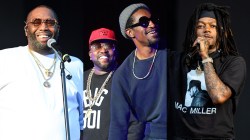
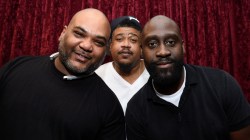

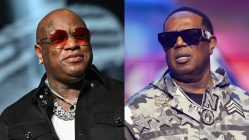
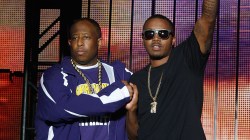
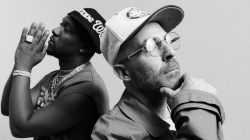
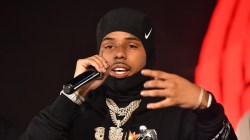

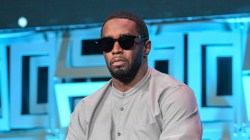

Another great article MIke! I especially liked seeing a breakdown of his acting.
Excellent article as always Mike!
Great article!!
Great write up as usual, that Quincy Jones quote really brought things into perspective, about how much more 2Pac could have done, which unfortunately none of us will ever truly know.
possibly the greatest prophet of our time. Makaveli comes back everytime you press “play”
44? damn he looks 25
Happy Birthday PAC! G. O. A. T. Yea
Happy birthday legend
RIP TO THE FUCKIN GOAT WESWES and im from CHIRAQ
TOP 5 DOA
2Pac
EMINEM
GAME
SCARFACE
NAS
6th man YOUNG JEEZY!!!!!!
That’s my nigga man just love me some tupac always..he is and was so compassionate for the love of kids his heart was strong and courages he is truly missed..Happy birthday champ
True dat. If Pac was still breathin’, Obama would be in more trouble than u can expect from da reds. R.I.P Pac
If Pac was alive, you’d be calling him old like Jay-Z
Another great article. Really enjoyed the acting part and it definitely brought back discussions we have had. I think Pac would have flourished in today’s environment where authenticity isn’t constantly challenged and artists aren’t constantly tasked with the burden of proving themselves (a burden I think may have contributed to his untimely death).
Maybe Tyrese is a good example of where Pac’s acting career would have gone considering his career took off after his role in Baby Boy.
I found the lady that organized the hit on Biggie. Tammie Hawkins, she is listed as Theresa Swann in Greg Kading’s murder rap book. Her in stage am is @real1tamms
A fantastic read. Tupac was a revolutionary. We lost something great.
GOAT as far I’m concerned.
phenomenal article. if only the culture was still rich like it was in those days..
“But you know what the fuck I think is just pathetic and gay
When niggas speculate what the fuck ‘Pac would say
You don’t know shit, about a dead mans perspective
And talking shit will get your neck bone disconnected” – Immortal Technique
thank you, good read
would like an address to order magazine of hip hop.
Great read loved it and if broke it all down…. If only he was still physically around who knows what d world would be like. G.O.A.T